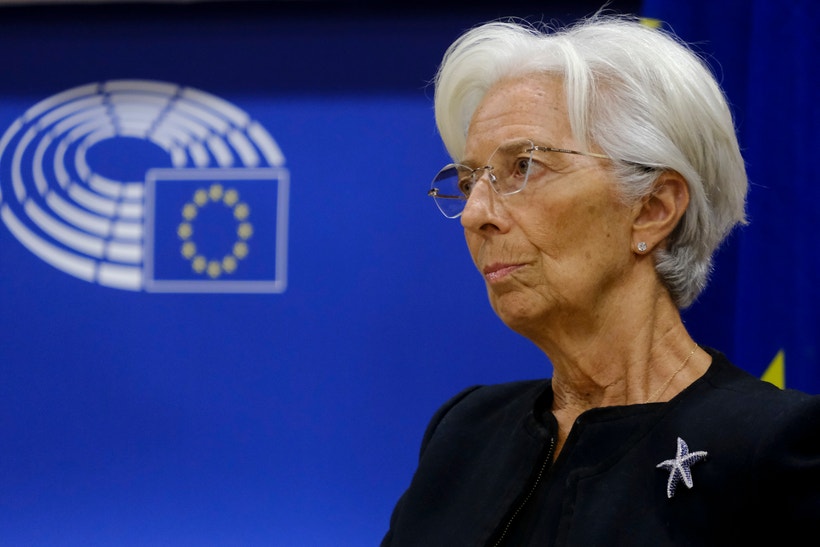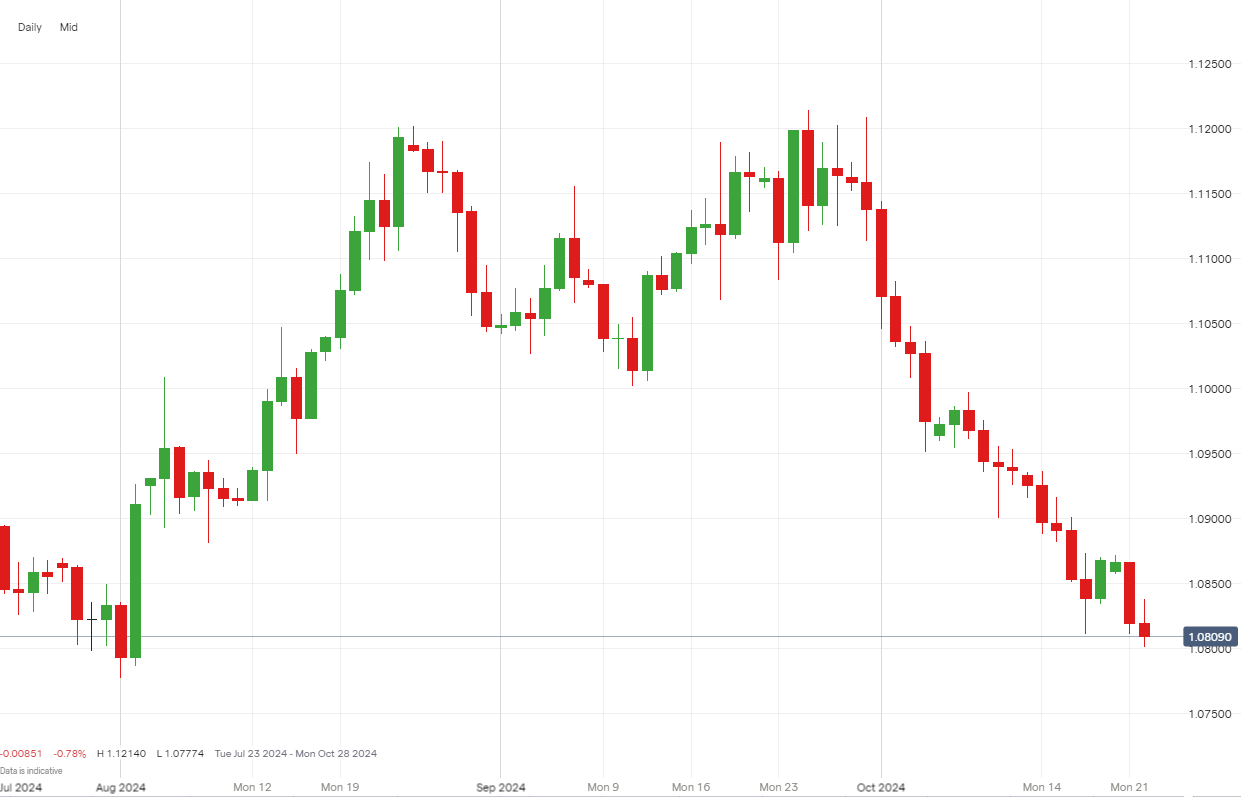EUR/USD drops below 1.0810 amid ECB cuts and rising US Treasury yields
Explore how ECB rate cuts and rising US Treasury yields impact EUR/USD dynamics, as investors react to economic signals and adjust strategies in a fluctuating forex market.

Key points
- EUR/USD drops to 1.08010, the lowest since August
- ECB implements third rate cut this year by 25 bps
- 30% chance ECB may cut rates by 50 bps in December
- US 10-year Treasury yield rises above 4.2%
- Euro and US yields show a negative correlation of about -0.5
EUR/USD Falls Below 1.0810
This week, the euro has experienced a significant downtrend, with the EUR/USD pair dropping to 1.08010—a level not seen since August. This decline is largely influenced by recent monetary policy decisions and the current economic sentiment in the Eurozone. The European Central Bank (ECB) has implemented its third interest rate cut of the year, aiming to stimulate the economy amidst ongoing challenges such as subdued growth and geopolitical uncertainties. ECB President Christine Lagarde's cautious remarks have further dampened investor confidence, highlighting the difficulties the Eurozone faces. As a result, the euro has come under increased pressure, reflecting broader concerns about the region's economic trajectory.
EUR/USD price history

ECB Speeches This Week Follow Rate Cut Decision
Following the ECB's recent decision to lower interest rates by 25 basis points, speculation about further rate cuts is rife among market participants. Many traders anticipate another rate cut in December, potentially by 25 basis points, to further stimulate the Eurozone's economy. However, there is a 30% market consensus that the cut could be as substantial as 50 basis points. This speculation underscores persistent concerns about the region's sluggish economic growth and the ECB's ongoing efforts to support recovery. As investors weigh these possibilities, the euro's performance remains closely tied to forthcoming ECB actions and economic indicators.
Euro and US Interest Rates Correlation Explained
The correlation between the euro and the US 10-year Treasury yield plays a critical role in forex markets, where these assets exhibit a notable negative correlation of nearly -0.5. Recently, the 10-year Treasury yield surged 12 basis points to exceed 4.2%, a peak that hasn't been reached since July. This increase signals potentially higher returns on US assets, drawing investors away from euro-denominated investments, particularly if Eurozone yields lag. Changes in the US 10-year yield often reflect expectations of Federal Reserve policy adjustments, which, if signaling tighter policy, can bolster the dollar's strength relative to the euro.
What’s Next for EUR/USD?
The future trajectory of the EUR/USD pair will be shaped by economic indicators and central bank policies. With the euro falling below 1.08100, the impact of the ECB's 25 basis point rate cut is evident. ECB President Lagarde's cautious outlook has further weakened the euro, prompting speculation on additional rate cuts in December. Meanwhile, the US economic environment, buoyed by a rising 10-year Treasury yield now over 4.2%, signifies higher returns on US assets, enhancing the dollar's appeal. This dynamic could maintain bearish pressure on the euro unless unexpected geopolitical or economic shifts occur. Traders must remain vigilant to adjust strategies based on evolving market conditions.
How to trade EUR/USD
- Open an account to get started, or practice on a demo account
- Choose your forex trading platform
- Open, monitor, and close positions on EUR/USD
Trading forex requires an account with a forex provider like tastyfx. Many traders also watch major forex pairs like EUR/USD and USD/JPY for potential opportunities based on economic events such as inflation releases or interest rate decisions. Economic events can produce more volatility for forex pairs, which can mean greater potential profits and losses as risks can increase at these times.
You can help develop your forex trading strategies using resources like tastyfx’s YouTube channel. Our curated playlists can help you stay up to date on current markets and understanding key terms. Once your strategy is developed, you can follow the above steps to opening an account and getting started trading forex.
Your profit or loss is calculated according to your full position size. Leverage will magnify both your profits and losses. It’s important to manage your risks carefully as losses can exceed your deposit. Ensure you understand the risks and benefits associated with trading leveraged products before you start trading with them. Trade using money you’re comfortable losing. Past performance is not indicative of future results.
